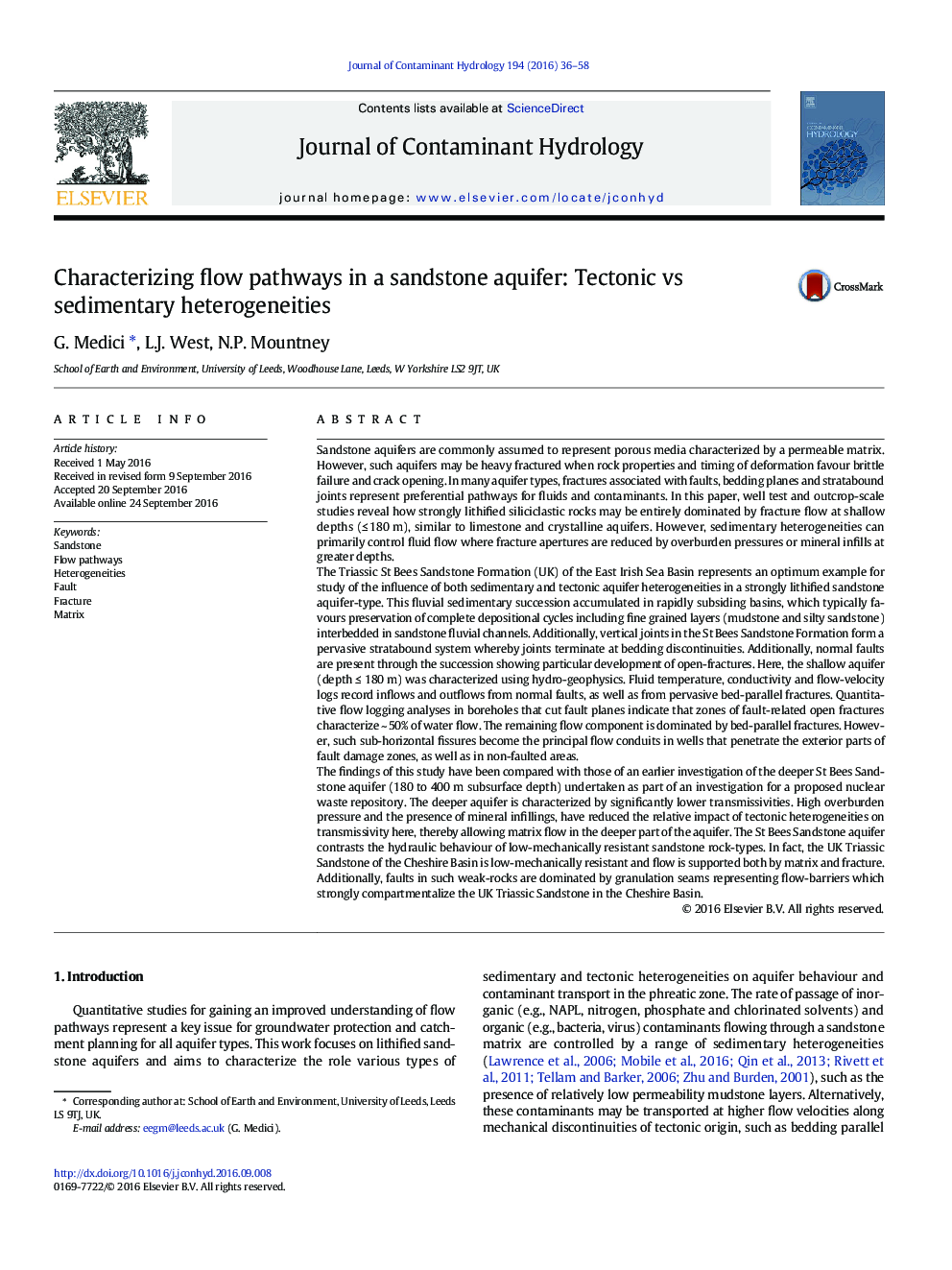| کد مقاله | کد نشریه | سال انتشار | مقاله انگلیسی | نسخه تمام متن |
|---|---|---|---|---|
| 4546323 | 1627017 | 2016 | 23 صفحه PDF | دانلود رایگان |
• Contaminant pathways in sandstone aquifers: tectonic vs sedimentary heterogeneities
• Flow in a lithified sandstone is dominated by tectonic fractures (depth ≤ 180 m).
• Fault structures characterize 50% of water flow in water wells at shallow depth.
• Bedding fractures act as main flow conduits in un-faulted wells at shallow depth.
• Fracture aperture lack, preserved mineral infills allow matrix flow (depth > 180 m).
Sandstone aquifers are commonly assumed to represent porous media characterized by a permeable matrix. However, such aquifers may be heavy fractured when rock properties and timing of deformation favour brittle failure and crack opening. In many aquifer types, fractures associated with faults, bedding planes and stratabound joints represent preferential pathways for fluids and contaminants. In this paper, well test and outcrop-scale studies reveal how strongly lithified siliciclastic rocks may be entirely dominated by fracture flow at shallow depths (≤ 180 m), similar to limestone and crystalline aquifers. However, sedimentary heterogeneities can primarily control fluid flow where fracture apertures are reduced by overburden pressures or mineral infills at greater depths.The Triassic St Bees Sandstone Formation (UK) of the East Irish Sea Basin represents an optimum example for study of the influence of both sedimentary and tectonic aquifer heterogeneities in a strongly lithified sandstone aquifer-type. This fluvial sedimentary succession accumulated in rapidly subsiding basins, which typically favours preservation of complete depositional cycles including fine grained layers (mudstone and silty sandstone) interbedded in sandstone fluvial channels. Additionally, vertical joints in the St Bees Sandstone Formation form a pervasive stratabound system whereby joints terminate at bedding discontinuities. Additionally, normal faults are present through the succession showing particular development of open-fractures. Here, the shallow aquifer (depth ≤ 180 m) was characterized using hydro-geophysics. Fluid temperature, conductivity and flow-velocity logs record inflows and outflows from normal faults, as well as from pervasive bed-parallel fractures. Quantitative flow logging analyses in boreholes that cut fault planes indicate that zones of fault-related open fractures characterize ~ 50% of water flow. The remaining flow component is dominated by bed-parallel fractures. However, such sub-horizontal fissures become the principal flow conduits in wells that penetrate the exterior parts of fault damage zones, as well as in non-faulted areas.The findings of this study have been compared with those of an earlier investigation of the deeper St Bees Sandstone aquifer (180 to 400 m subsurface depth) undertaken as part of an investigation for a proposed nuclear waste repository. The deeper aquifer is characterized by significantly lower transmissivities. High overburden pressure and the presence of mineral infillings, have reduced the relative impact of tectonic heterogeneities on transmissivity here, thereby allowing matrix flow in the deeper part of the aquifer. The St Bees Sandstone aquifer contrasts the hydraulic behaviour of low-mechanically resistant sandstone rock-types. In fact, the UK Triassic Sandstone of the Cheshire Basin is low-mechanically resistant and flow is supported both by matrix and fracture. Additionally, faults in such weak-rocks are dominated by granulation seams representing flow-barriers which strongly compartmentalize the UK Triassic Sandstone in the Cheshire Basin.
Journal: Journal of Contaminant Hydrology - Volume 194, November 2016, Pages 36–58
